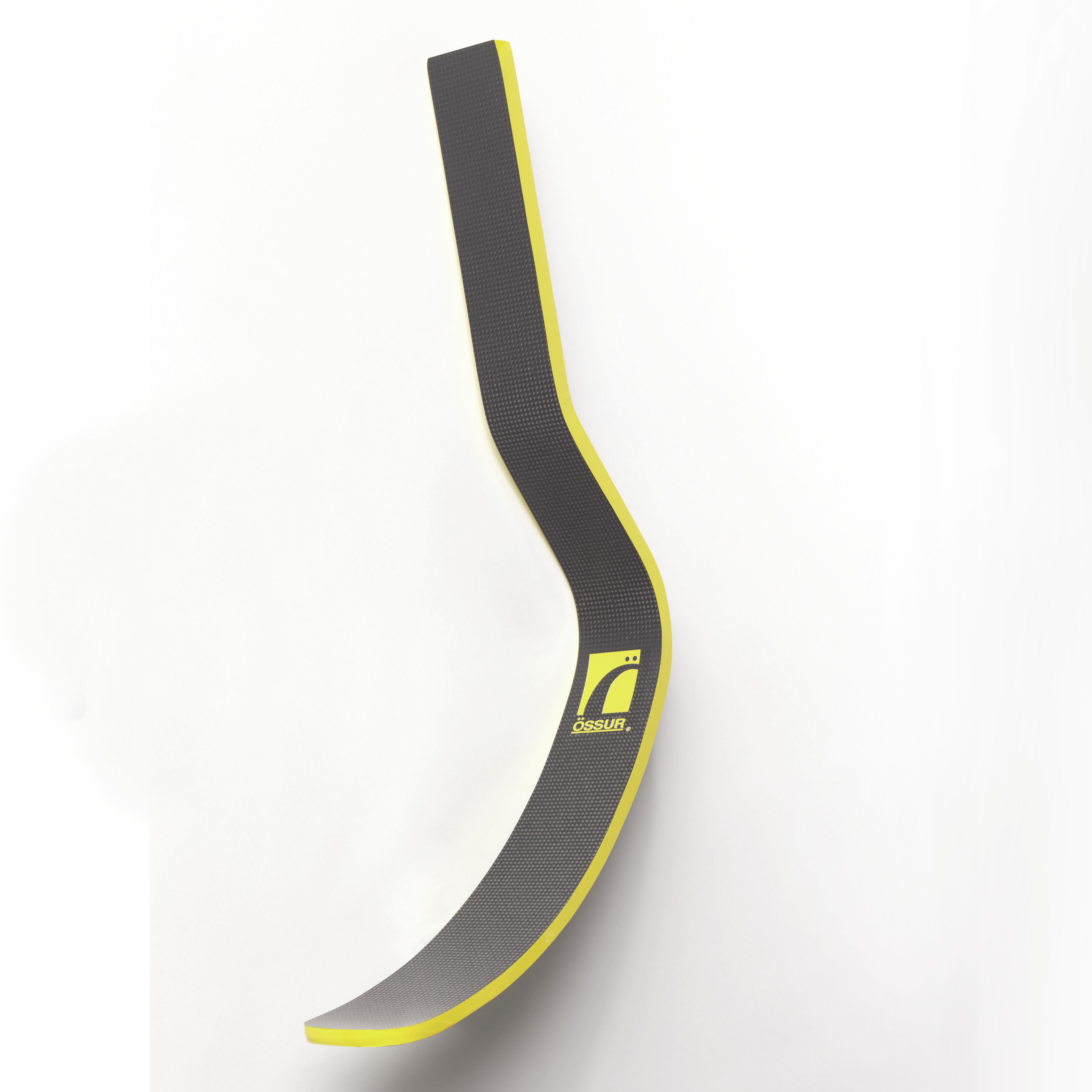The Flex-Foot Cheetah incorporates untraditional materials to solve a design problem that had vexed the medical field for years: finding a prosthetic solution that allows the user to live a normal, active lifestyle. Van Phillips lost his leg below the knee at the age of 21. Unsatisfied with the prosthetics then available to him, he set about researching a material that had to satisfy three key requirements: it needed to be strong, lightweight, and flexible. He settled on a carbon-fiber composite, traditionally used in the aerospace industry. The result of Phillips’ research is a J-shaped high-performance prosthetic tool used primarily for sports activities that mimics a person’s foot/ankle joint anatomy.
Inspired by the rear leg of the cheetah, the fastest animal on earth, the woven carbon fibers are molded into an elegant shape that acts as a springboard. The carbon fiber material is not uniformly distributed throughout the prosthetic, however. Instead, areas of high stress, like the J-curve and apex, feature more layers of the material; areas requiring increased flexibility feature less. This creates a more anatomically accurate prosthetic experience: the inclined midsection directs the ground contact toward the front two inches of the “toe” in much the same way the cheetah’s paw presses into the ground. The C-shaped segment stores energy like the animal’s hind leg by compressing and springing back, which propels the runner forward.
The prosthetic sprinting foot and other tools appear in the exhibition Tools: Extending Our Reach, 12 December 2014 – 25 May 2015.
Andrew Gardner is currently a graduate student intern and a former summer 2014 Peter Krueger curatorial intern at the Cooper Hewitt, Smithsonian Design Museum. He is pursuing a master’s in Design History from the Bard Graduate Center, expected 2015.
